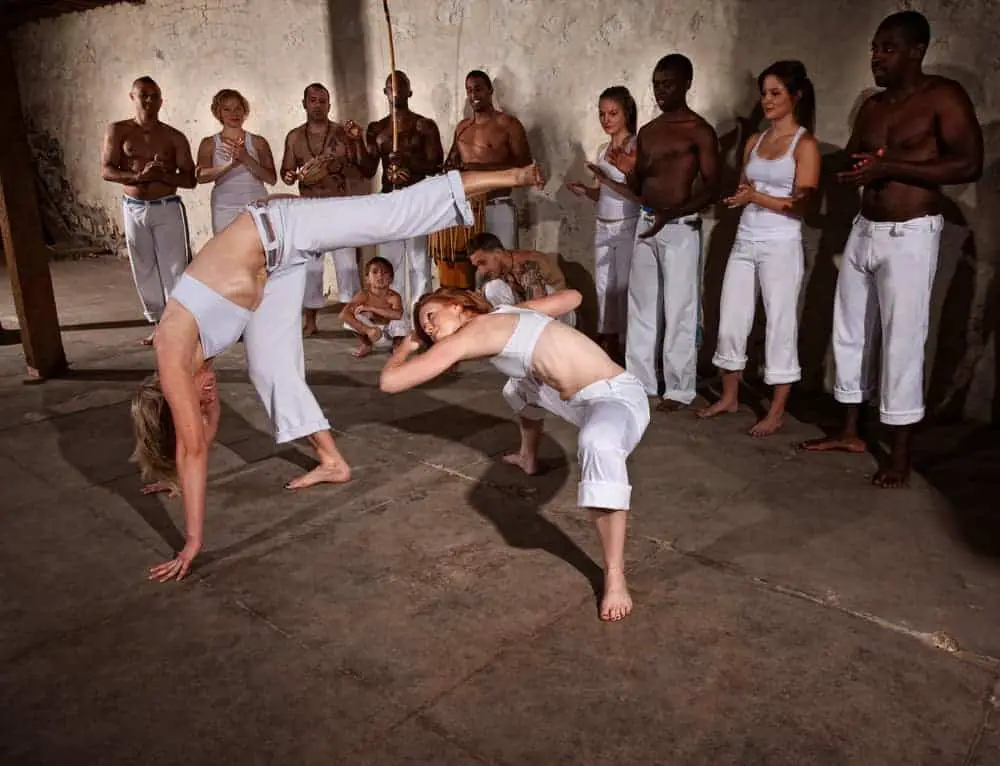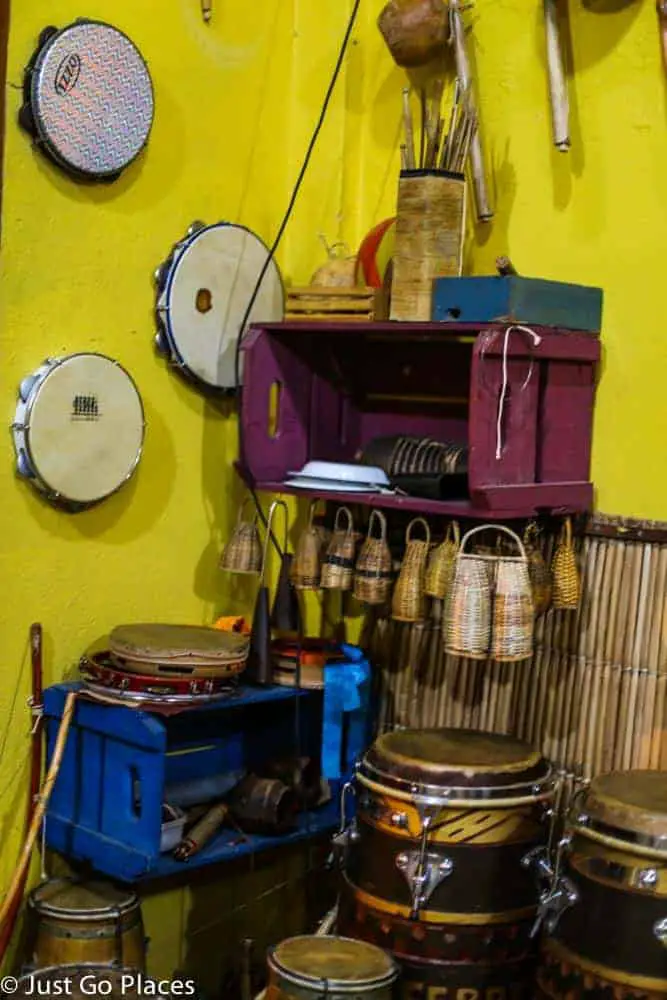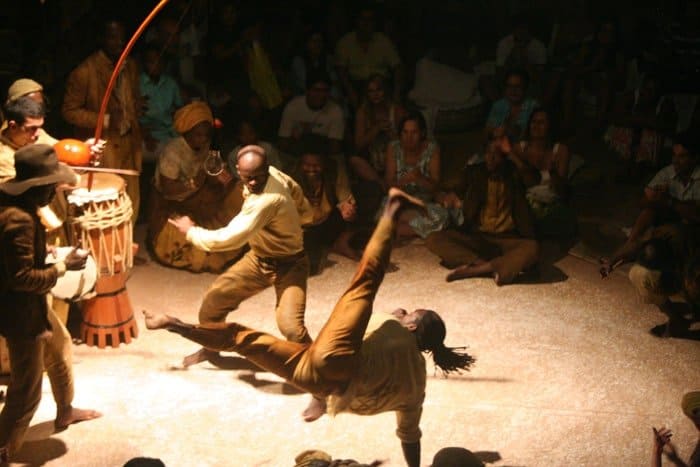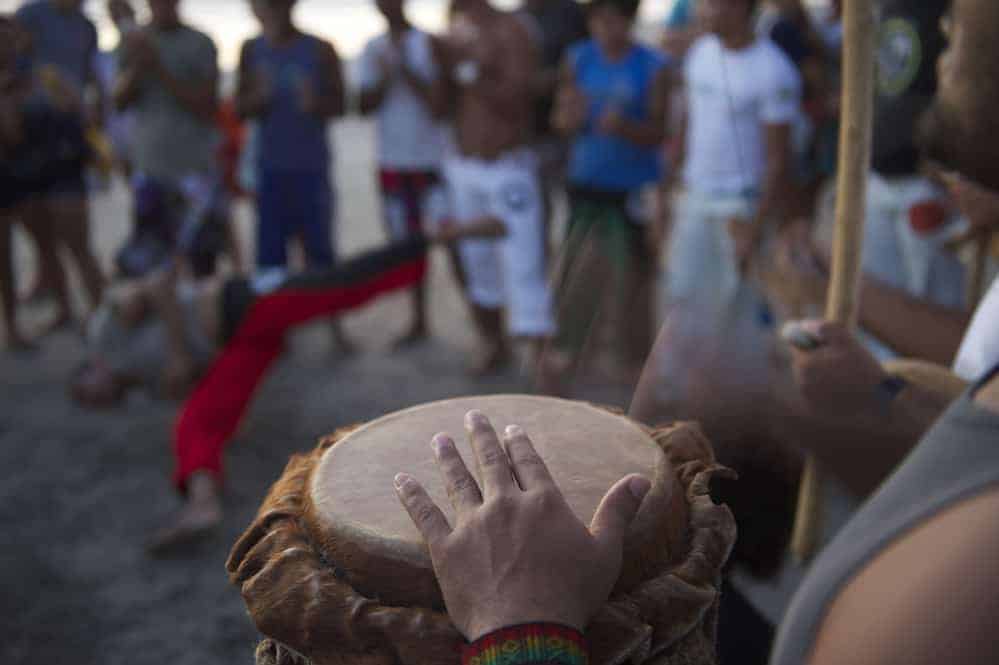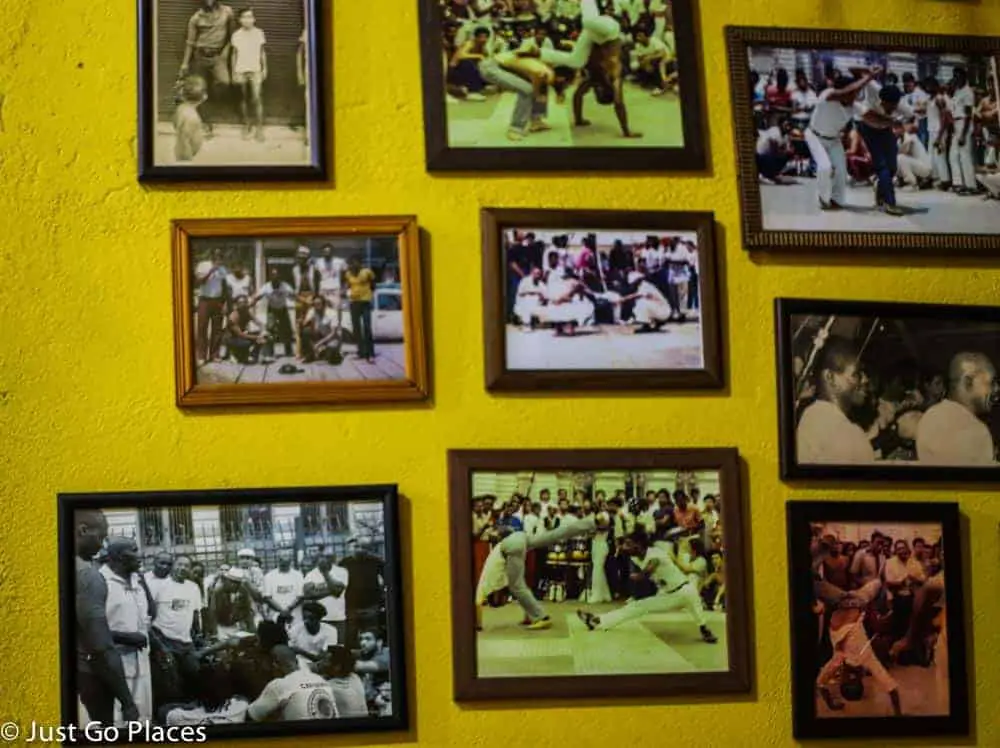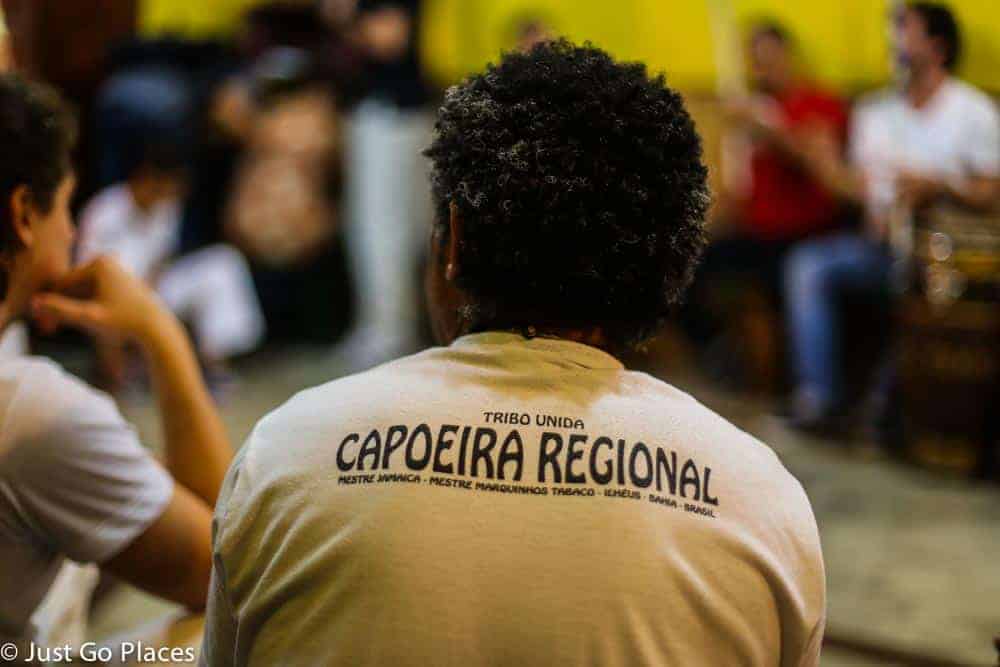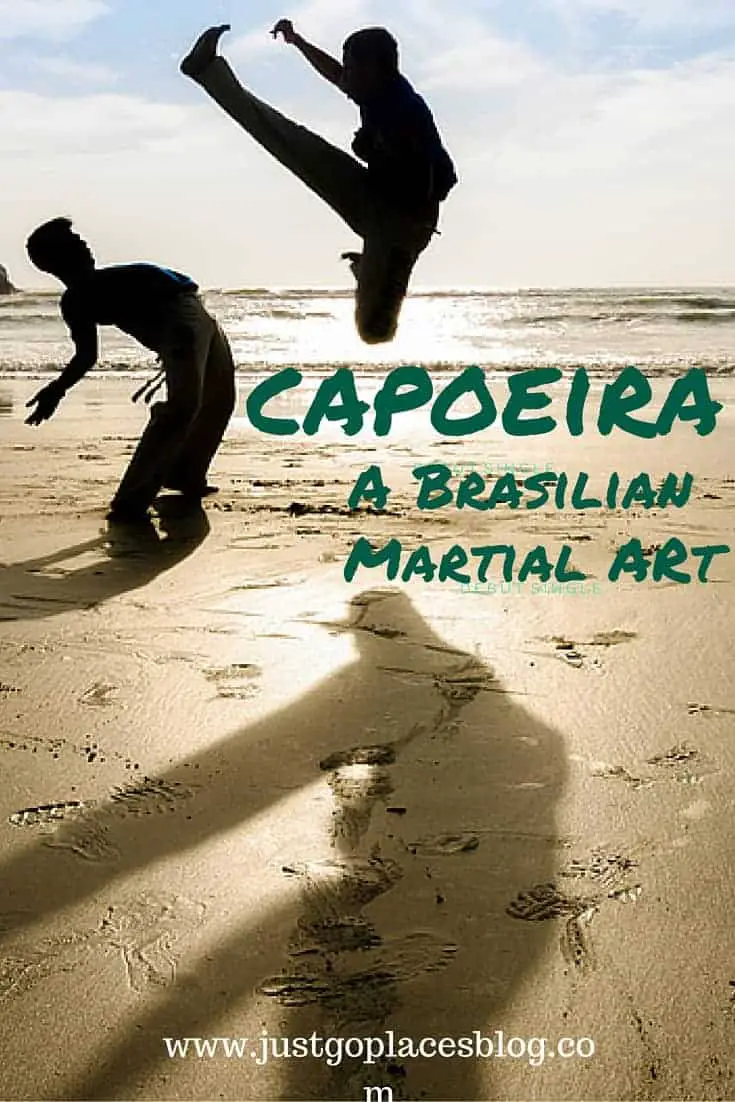The first time I heard of Capoeira it was a fitness class described as Brazilian dance exercise. Sort of like Zumba but from the last decade. Since I have zero co-ordination, I never took the class. In Brasil, I discovered that capoeira was more than dancing and nothing like the Lambada, the Brasilian dance popularised in the 1980’s. In fact, Capoeira is a form of martial arts with a long history dating back to its colonial times.
Contents [hide]
What is Capoeira?
Capoeira is a Brasilian martial art that incorporates dance, acrobatics, rhythm and music.
Two opponents face each other and then do a serious of complex, quick manoeuvres which are based on attacking and defensive moves. The opponents are constantly moving. This movement means the practitioner is a moving target and also helps the person feint and attack better. You can also do a rolls and acrobatics so that it is very hard for your opponent to pin you down.
Demonstrations involve a where everyone forms a circle around the two opponents. People play instruments and sing the traditional songs. There’s a lot of clapping as well. The traditional instrument is a berimbau. The songs are traditional with many in a call and response format.
In the traditional form of Capoeira, the moves tended to be more like fighting. There are a lot of strategic moves and unpredictability in the movements. The newer tradition of Capoeira emphasises acrobatics and grace. Some old-timers don’t even consider it capoeira.
History of Capoeira
Capoeira has its roots in the African slaves brought to Brasil by the Portuguese. The Portuguese established massive sugarcane plantations in Brasil with cheap labor supplied by African slaves. The slaves were treated brutally and lived in inhumane conditions.
The slaves practiced capoeira as a way to keep themselves agile and develop their fighting techniques. If they were spotted by their masters, the slaves would merely pretend to be dancing. People think capoeira was started in the 16th century. No one really knows because of its secretive origins. For the slaves, capoeira was a form of cultural identity when everything else had been stripped from them.
Image credit: Irene Nobrega
Many slaves were also able to escape using their capoeira skills and set up their own communities hidden away from the Portuguese. One such community apparently numbered about 10,000 escaped slaves. Even within the areas that they controlled, the Portuguese soon realised that capoeira gave their slaves real fighting skills.
With the end of slavery in Brasil in 1888, people who had capoeira skills started using them for criminal enterprises. Basically, the slaves were freed but had no jobs or skills. No one wanted to hire them because they were deemed lazy. The freed slaves resorted to crime to make ends meet or as mercenaries practiced in the skill of capoeira.
In 1890, the authoritiesprohibited the practice of capoeira. People who were caught practicing capoeira were jailed if they were lucky. If they were unlucky, they were put to death or had their achilles tendon severed.
Capoeira wasn’t decriminalised until 1940 when the Brasilian authorities were finally convinced capoeira had cultural merit. Today, Brasil is proud of its capoeira tradition and has exported its practice worldwide. Capoeira has even received a special status as a UNESCO protected heritage.
The Capoeira Demonstration
Like most things in Sao Paulo, they didn’t make it easy for us to visit a capoeira exhibition. We finally found a dance school who was having a special exhibition with its old Master.
When I say old, I mean former teacher as well as aged person. The man was about 90 years old but had a fluid lithe grace. He would have been practicing capoeira as a youth back when it was still illegal. That’s the Master in the photo below sitting in the corner with the hat. He commanded a lot of respect and reverence from the crowd.
Capoiera was amazing to watch! The little hall was full of people, including the performers. My friend and I were the only foreigners watching. I can truthfully say I had no idea what they were singing but I found the whole thing mesmerising, including the music.
We were lucky enough to see different styles of capoeira performed by the capoeiraistas. Some of the older performers were definitely more aggressive while the young children were very acrobatic and graceful. Everyone seemed to be having fun though.
The dance school was not in a great neighbourhood and my friend’s driver/bodyguard stayed with us. When we returned to our car after the event, we found 2 policemen arresting a guy who was trying to break into the car! I’m afraid I never quite got used to the ever present danger of crime in Sao Paulo. Every time it would take me back.
I’m afraid I have no idea where this school was in Sao Paulo. Even if I did, I would not be comfortable recommending it to a tourist. You need to go with someone who knows what they are doing and possibly have an escort to avoid any unpleasantries.
***
SPREAD THE WORD! PIN THIS TO YOUR TRAVEL PINTEREST BOARDS FOR FUTURE REFERENCE!
We did not receive compensation of any form, monetary or otherwise, from any of the products, services, hotels etc mentioned in this article.
This site generates income via partnerships with carefully-curated travel and lifestyle brands and/or purchases made through links to them at no extra cost to you. More information may be found on our Disclosure Policy.

